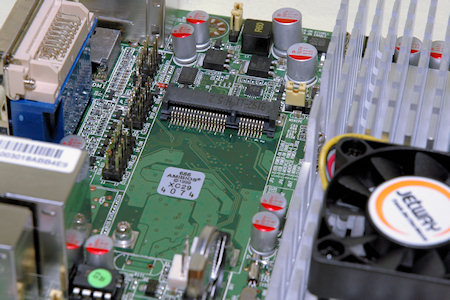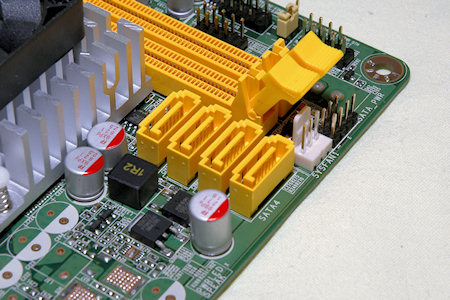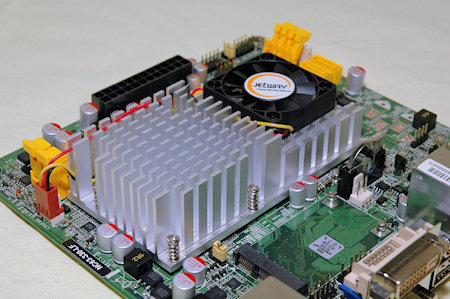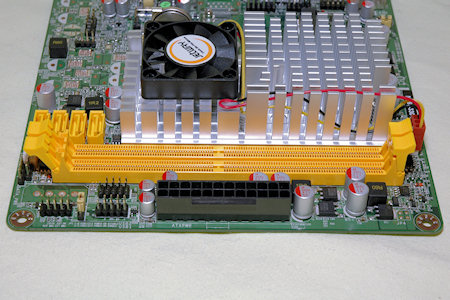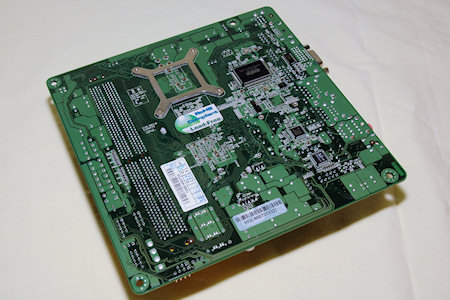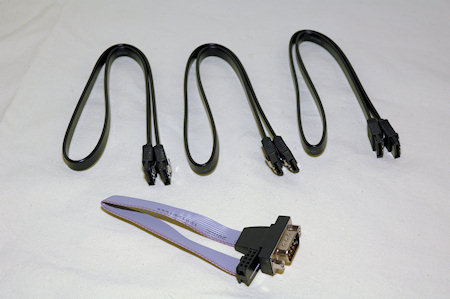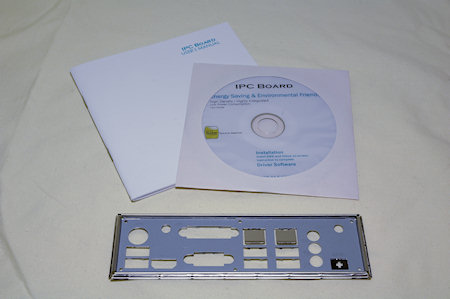Jetway NC63-330-LF
The NC63-330-LF comes in a really small blue-black cardboard box, inside it we find nothing more than what's necessary to get the board up and running. That is, excluding disk and optical drive, memory and power supply of course.
However, the CPU is included as it's an onboard one. That's right we have an onboard Intel Atom cpu, namely the 330 which is a dual-core cpu. There is also a NC63 version with the single core Atom cpu named 230.
The Atom 330 that we have on our NC63 today is clocked at 1.6 GHz coupled together with the NVIDIA MCP7A-ION chipset. This duo gives us some really nice features, more on that as we progress.
The NC63 also comes in a P variant, which means that it has an onboard power supply, so all you need is a wallwart that can provide the specified ampere and voltage. Our NC63 is the one without a power supply so we will still need an ATX style power supply. Either a small form factor one or a standard sized one.
In any way and any configuration of the board it still comes with a standard green circuit board and as this is a mini ITX sized board it is as small as 17 by 17 cm. On the board we can see that we have some solid polymer capacitors which should give the board a longer and more stable life.
With this small space everything is a bit cramped which could mean that some connectors might be hard to get to when everything is installed. Jetway has however done their best and we couldn't find any direct problems with connectors interfering with any headers or the like.
On the image above we see the power supply area, for the NC63P boards, front port audio header, CIR header which stands for Consumer InfraRed if you have the need to control the board with a remote control. We also find the CD-in connector, a fan header and the onboard battery for the BIOS chip.
Next up we find the PCI-E slot, but unlike other boards there is no regular PCI-E slot, but a mini slot. In the mini slot you can fit a few different types of cards, one for example is a WiFi card. For those of you looking for a DVB card, there are some but they are hard to find and there is probably more you can fit in this slot but I've yet to discover that ;)
The mini-PCI slot also features two screws, so you can secure your add-in card in case you need to.
Next thing we take a look at is the SATA connectors which are four in total. Next to it we have the system fan header as well as a SATA power connector. The SATA interface is type 2 which permit speeds up to 3GB / second. They also support RAID 0, 1, 5, 0+1 and also JBOD.
The gigantic, but still very small, heatsink for the Atom cpu is a one-piece feature, meaning it cools both the Atom cpu but also the NVIDIA chipset. On top of it we find a small 40mm fan which surprisingly is very quiet.
Continuing around we have the memory slots, which can hold up to a total 4 gigabyte of unbuffered DDR2 800/667 memory. Moreover we have the front panel header where we connect the power and reset buttons as well as the leds. We also find two USB headers for even more ports and finally the ATX power connector where 24 is the magical number of pins to go for when you're out hunting a power supply.
Before the IO part, we take a look at the bottom of the board where we find a support bracket for the heatsink on the other side, as well as some chips.
The rear IO part is probably one of the things I look for first in other reviews. I don't know why, but I think it's because it's the structure of the connectors that I like so much. Also it can give away some of the main features of the board.
As we can see in the following image we have a keyboard connector, a total of six USB2 connectors, both VGA and DVI monitor connectors, 6 channel audio connectors as well as optical out in the blue port. We also find the network connector which sports a blazing 1 GBit interface but lastly and perhaps most important for this board, an HDMI connector.
Yes that's right we have a HDMI connector onboard, which mean we have a HD chipset as well. This connector gives us 1080i, 1080p and HDCP. Does that mean we can play HD content when up and running? Well we'll take a look at that further down with our tests.
So, except for the board what more do we get inside the box? We get a serial port to connect to the serial port header onboard and three SATA cables, are we missing one?
We also get a manual with description of all the headers onboard as well as all the other features. A driver CD with drivers for your board to use with Windows XP, Vista and Windows 7. Some drivers may need to be downloaded from the Jetway site. Lastly we get an IO shield.
On next page we'll hook the NC63 up to a screen and power it up to see how it performs.




